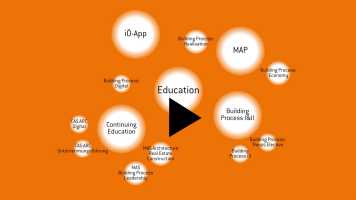Research l Expertise l Education
10 Years of ITA

Video: Chair of Architecture and the Building Process l Prof. Sacha Menz
Mission Statement
‘… Oh dear! You know these jobs have a funny habit of ending up in the hands of the local architects,’ Sir Ove Nyquist Arup remarked when his own team – along with that of Renzo Piano and Richard Rogers – won the competition to build the Centre Pompidou. Was it his own experience, knowledge, or skills that led him to make such a statement? In the Department of Architecture at ETH Zurich, we focus on the design and building process and on the relationships among the protagonists involved – relationships between clients, architects, engineers, and contractors. We develop strategies that use the attitudes, decisions and experience of the figures whose stories we tell in order to give practical shape to our own professional work. It is through this type of narrative – covering authorship, competence, entrepreneurship, collaboration, sustainability, craftsmanship, innovation, and much more as well – that we enable students to interpret things and adapt them better, in a setting in which there can hardly ever be a clear ‘yes’ or ‘no’. In the stories that lie behind the stories, what is important is not so much processing past events in a documentary fashion, but rather questions of how to achieve collaborative work in a project, how to take decisions with expert knowledge, and how to generate attitudes.
We link this methodology to laboratory-like practical work, research and teaching. In the research field, storytelling improves our ability to question, discuss and participate. In teaching work, finding these stories beyond enables us to help students develop their own ideas, think critically and reach potential decisions on an independent basis. Having to justify their decisions means that students are encouraged to think about what they themselves might have done in a given situation – the same thing as the example architects from the past about whom they are learning, or something different in view of present-day social, economic and ecological considerations. We promote the students’ own operational competence and we support their ability to achieve integrative thinking and design. The role of the architect is traditionally seen as being that of the ‘first among equals’. In addition to the creative skills involved in design and construction, their responsibilities also cover organisational and management-specific work. They are expected not only to be aware of these management tasks, but also to carry them out and to represent clients’ interests to third parties.
In addition to mediating these role models, the challenge lies in providing an overview not only of the process of design and construction itself, but also of the protagonists involved and the influences of business, society, and the environment and placing it in a more general context. To achieve this, we have developed a digital matrix that both provides a full overview and also indicates dependencies and connections – MAP, the methodological application for the design and building process. It comprises the basic knowledge for all of our teaching units in the bachelor’s degree and master’s degree courses, as well as in continuing education and research. At the same time, MAP is also the tool through which the lectures are presented, since the content of the lectures, explained using example cases and exercises, can be directly linked to the basic knowledge in this way. In the future, it is also intended to supplement MAP with a learning environment and a layer featuring moderated contributions from students. The aim is to achieve methodological research and participation and interaction by the students in publishing their work, the content of which will in turn be linked to the basic knowledge included in MAP.
